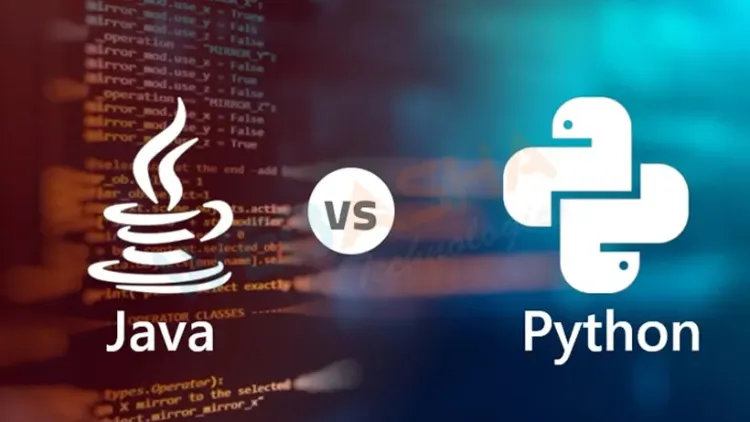Python vs. Java | Which Programming Language Should You Learn?
Explore the key differences between Python and Java to determine which programming language is best for your career goals. Compare ease of learning, performance, use cases, and more to make an informed decision.

Choosing the right programming language to learn can be a daunting task, especially when two of the most popular options are Python and Java. Both languages have their unique features, advantages, and use cases. In this blog, we will compare Python and Java across various criteria to help you decide which one is best suited for your learning journey and career goals.
Table of Differences Between Python and Java
| Criteria | Python | Java |
|---|---|---|
| Ease of Learning | Simple syntax, beginner-friendly | More complex syntax, steeper learning curve |
| Execution Speed | Generally slower due to dynamic typing | Faster due to static typing and JIT compiler |
| Syntax | Concise and readable | Verbose and strict |
| Typing | Dynamically typed | Statically typed |
| Use Cases | Web development, data science, scripting | Enterprise applications, Android development |
| Performance | Slower for CPU-intensive tasks | Faster performance, especially for large applications |
| Libraries and Frameworks | Extensive, especially for data science and machine learning (e.g., TensorFlow, Pandas) | Rich set of libraries and frameworks for enterprise (e.g., Spring) |
| Community Support | Large and active community | Large and active community |
| Portability | Highly portable, works on multiple platforms | Write once, run anywhere (JVM) |
| Memory Management | Automatic garbage collection | Automatic garbage collection |
| Development Speed | Faster due to simpler syntax and dynamic typing | Slower due to verbose syntax and static typing |
| Concurrency | Less mature concurrency model | Robust concurrency model (multithreading) |
| Learning Resources | Abundant tutorials, courses, and documentation | Abundant tutorials, courses, and documentation |
| Popularity | Increasingly popular, especially in academia and startups | Very popular, especially in large enterprises |
Detailed Comparison
Ease of Learning
Python is known for its simple and readable syntax, which makes it an excellent choice for beginners. The language's design philosophy emphasizes code readability and simplicity, allowing new programmers to pick up the basics quickly.
Java, on the other hand, has a more complex and verbose syntax. While it can be challenging for beginners, it provides a solid understanding of object-oriented programming principles and is highly valued in enterprise environments.
Execution Speed
Python is generally slower than Java because it is an interpreted language and uses dynamic typing. This can lead to performance bottlenecks, especially in CPU-intensive applications.
Java benefits from the Just-In-Time (JIT) compiler and static typing, making it faster and more suitable for performance-critical applications.
Syntax
Python has a clean and concise syntax that emphasizes readability. For example, it uses indentation to define code blocks instead of braces, making the code look neat and understandable.
Java uses a more traditional approach with explicit declarations and braces to define code blocks. This results in more verbose code, but it also enforces a strict structure, which can help in maintaining large codebases.
Typing
Python uses dynamic typing, meaning variable types are determined at runtime. This flexibility can speed up development but may lead to runtime errors if not managed carefully.
Java uses static typing, where variable types are defined at compile-time. This reduces the risk of type-related errors and improves performance but can make the code more cumbersome to write.
Use Cases
Python is widely used in web development, data science, machine learning, scripting, and automation. Its extensive libraries and frameworks, such as Django and Flask for web development, and TensorFlow and Pandas for data science, make it a versatile language.
Java is a staple in enterprise applications, large-scale systems, and Android app development. Frameworks like Spring and Hibernate are popular in building robust, high-performance applications.
Performance
Python may not be the best choice for CPU-intensive tasks due to its slower execution speed. However, it excels in development speed and flexibility.
Java offers better performance for large applications and systems that require high efficiency and speed, thanks to its compiled nature and efficient memory management.
Libraries and Frameworks
Python boasts a vast array of libraries and frameworks, particularly in data science and machine learning. This makes it a go-to language for researchers and developers in these fields.
Java also has a rich set of libraries and frameworks, especially for enterprise development. Tools like Spring, Hibernate, and Apache Kafka are widely used in building scalable and reliable systems.
Community Support
Both languages have large and active communities, providing extensive support, resources, and documentation. Whether you choose Python or Java, you will find a wealth of tutorials, forums, and courses to help you learn and troubleshoot.
Portability
Python is highly portable and runs on multiple platforms without modification. Its flexibility makes it suitable for various environments.
Java's "write once, run anywhere" philosophy is achieved through the Java Virtual Machine (JVM). This ensures that Java applications can run on any device with a JVM, enhancing its portability.
Memory Management
Both Python and Java use automatic garbage collection to manage memory. This helps in reducing memory leaks and simplifying development.
Development Speed
Python allows for rapid development due to its simple syntax and dynamic typing. This makes it ideal for prototyping and iterative development.
Java's development speed can be slower because of its verbose syntax and static typing. However, this verbosity contributes to more structured and maintainable code, which is beneficial for large projects.
Concurrency
Python's concurrency model is less mature compared to Java's. While Python supports multithreading, the Global Interpreter Lock (GIL) can limit performance in CPU-bound tasks.
Java has a robust concurrency model with built-in support for multithreading. This makes it a strong candidate for developing applications that require high levels of concurrency and parallelism.
Learning Resources
Both Python and Java offer abundant learning resources, including tutorials, online courses, and extensive documentation. Whether you are a beginner or an experienced programmer, you will find ample materials to help you master either language.
Popularity
Python has seen a surge in popularity, especially in academia, startups, and the data science community. Its simplicity and versatility have made it a favorite among new programmers and researchers.
Java remains one of the most popular programming languages, particularly in large enterprises and the Android development ecosystem. Its stability, performance, and scalability make it a reliable choice for complex applications.
Conclusion
Choosing between Python and Java depends on your goals and the specific use cases you are interested in. If you are a beginner looking for an easy-to-learn language with applications in web development, data science, and automation, Python is an excellent choice. On the other hand, if you are interested in building enterprise applications, large-scale systems, or Android apps, Java offers robust performance and extensive industry use.
Ultimately, both languages have their strengths and can be valuable additions to your programming skill set. Consider your career aspirations and the type of projects you want to work on to make an informed decision.











![Top 10 Ethical Hackers in the World [2025]](https://www.webasha.com/blog/uploads/images/202408/image_100x75_66c2f983c207b.webp)

![[2025] Top 100+ VAPT Interview Questions and Answers](https://www.webasha.com/blog/uploads/images/image_100x75_6512b1e4b64f7.jpg)









